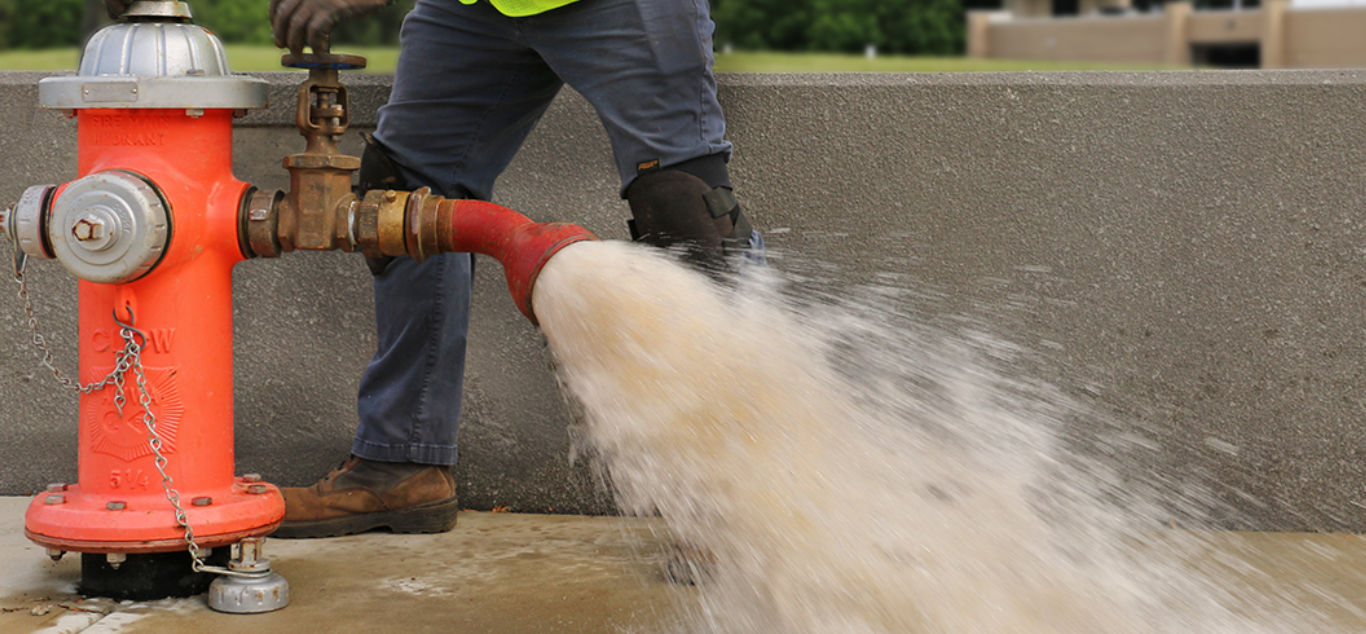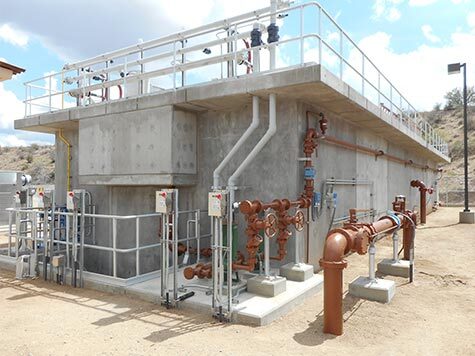- Info CenterHalogen SensiCLĒNE™ The MP5™ was created with stable calibrations and low maintenance as priority requirements. To that end,...Real Talk about "Continuous Monitoring" Chlorine Analyzer claims Some manufacturers of online chlorine analyzers are making bold claims...
- Industries & ApplicationsMaritime & Aviation
Potable Water
Airport & AirPLane Monitoring
Inflow Source Monitoring
Tanker Monitoring
INDUSTRIALCommercial Buildings
Industrial Processing
Applications - ProductsHalogen SensiCLĒNE™ The MP5™ was created with stable calibrations and...Real Talk about "Continuous Monitoring" Chlorine Analyzer claims Some manufacturers...
- Contact
- Cloud
Chlorine Analyzers & Water Conservation
A California city colved its water waste and infrastructure challenges with a new in-pipe chlorine sensor
THE WATER SUPPLY for the City of Lakewood (Calif.) is 100% groundwater. The city draws all of its water from the Central
Basin aquifers and pumps approximately 6,500 acre-feet of groundwater per year, operating 11 deep wells with approximately 180 miles of water mains that range from 4-27 inches in diameter. The city also has three water storage facilities, which hold approximately 13 million gallons, and two treatment facilities.
In 2018, the city started looking for a chlorine sensor that wouldn’t require a waste stream, as some of its wells don’t have the infrastructure to effectively drain the waste stream generated from its existing chlorine analyzer. The city verified chlorine residuals by collecting daily grab samples at several well locations. However, this process wouldn’t notify operators if, for whatever reason, chlorine wasn’t injected into the distribution system. This issue could result from air-locking, chlorine feed pump failure, or a break or leak from the chlorine feed line.
"In 2018, the city started looking for a chlorine sensor that wouldn't require a waste stream, as some of its wells don't have the infrastructure to effectively drain the waste stream generated from its existing chlorine analyzer."
By Michael Santillan, Derwin DY, Derek Nguyen, and Michael Silveri
In addition, water consumption was a factor for the city. The city’s amperometric sensors and N, N-diethyl-p-phenylenediamine (DPD) instruments required a waste stream of up to 69,000 gallons of water. This amounts to 0.2 acre-feet of water per year. At the city’s billable rates, this is $690 per year in non-revenue water. A primary concern in California is water consumption. After almost a decade of drought, California water agencies are looking for ways to conserve water.
The Search Begins
The city started searching for a wet tap chlorine analyzer that was approved by the National Science Foundation (NSF) and American National Standards Institute (ANSI) and didn’t generate a waste side stream. After several months, the city found a company, Halogen Systems, which advertised a chlorine analyzer for seawater use. Although the analyzer wasn’t NSF/ANSI 61-approved, the city worked with the company on trial projects to determine whether the analyzer would meet its needs.
First Trial: Flow-Cell Version. In April 2021, Halogen Systems developed its first prototype, and the city tried the flow-cell version of the company’s MPS sensor at one of its booster stations. The best way to test the new analyzer was to compare with the existing analyzer at the booster station, so the flow-cell version was installed to track chlorine residuals from the same sample tube (Photo 1). Data were collected for several months.
The new sensor was installed without any flow regulator, start-up configuration was simple, and results were accurate within 0.04 mg/L of the existing ana-lyzer. During the next six months of operation, the new sensor didn’t require any calibration and needed only minor maintenance to clean the cells from manganese buildup. After six months of operating with both sensors, the city decided to take the existing sensor offline. The city was confident that monitoring results from the Halogen Systems’ flow-cell analyzer were accurate and reliable. The city continued to check accuracy by collecting grab samples after the old sensor was removed. The city’s experience with other membrane-style amperometric sensors is that they require regular calibration besides other periodic maintenance.
The Halogen MP5 was different, with features such as being flow-independent and self-cleaning. It has been operating since April 2021 and started up with no calibration or flow adjustment. There was a 0.05 mg/L difference in DPD, with no drift.
Second Trial: Wet-Tap, In-Pipe Version. The flow-cell version worked well, but the city was particularly interested in the company’s wet-tap, in-pipe version of the sensor. Once Halogen Systems had received NSF/ANSI 61 and NSF/ANSI 372 certification, the city tested the wet-tap version. Because it was the first wet-tap installation, there were a few setup issues. However, once the bugs were worked out, the sensor was installed at a well location where there was no ongoing monitoring. The wet-tap sensor’s results were compared with grab samples, and its performance was similar to the flow-cell sensor. Shortly after installing the wet-tap sensor, a notification was sent to plant operators that the chlorine residual had dropped. An operator was able to quickly resolve the issue. However, without the wet-tap sensor, the well may have continued to deliver water to the distribution with little chlorine residual. The city realized the importance of continuous monitoring at each well location.
Twofold Success
During two years of operation, the wet-tap sensor hasn’t required calibration or service, and the city intends to deploy the sensor at other well locations as needed to help continuously monitor chlorine residuals delivered throughout the distribution system. The sensor also helps the city detect water age problems as well as measure monochloramine and free chlorine. Having served as a test case for Halogen Systems’ new product, the city successfully concluded its search and provided the company with valuable feedback to consider for future upgrades.
"During two years of operation, the wet-tap sensor hasn't required calibration or service, and the city intends to deploy the sensor ... throughout the distribution system."
By Michael Santillan, Derwin DY, Derek Nguyen, and Michael Silveri
Many Applications Benefit from a Self-Cleaning, Low-Maintenance Analyzer
Halogen’s technology helps maintain stable calibrations while lowering maintenance requirements. This combination makes MP5™ a good option for monitoring stations that might otherwise involve constant crew rollouts for operator interventions. When packaged with remote telemetry options, the MP5™ can be the foundation for IoT monitoring solutions. See below for example applications.

REMOTE RESERVOIR
Suspended directly in the a drinking water reservoir, an MP5™ chlorine sensor can report via a cellular telemetry option. When running on an optional battery kit, the MP5™ can sample at predefined intervals and operates with no maintenance interaction for a month.

END-OF-LINE TESTING
Municipalities that currently have to roll a truck to know with certainty that homes at the end of the line are getting appropriate PPM can lower costs and increase accuracy by putting an MP5™ directly in the neighborhood water pipe. Data can broadcast via cellular telemetry.

GRID MONITORING
Water aging and other degradation issues in a distribution grid can be discerned by deploying MP5™ analyzers at desired points in the system. Operators can track temperature, conductivity, pH, and even ORP no matter the flow or pressure (up to 10.5 bar) via remote telemetry options.

CRUISE SHIP DRINKING WATER
To guard against Legionella, cruise lines need to monitor chlorine levels in their freshwater tanks, guard against contamination from source providers, and sample at the actual taps. SensiCLĒNE™ technology and the flexible installation options of the MP5™ analyzer allow operators to create solutions that will work in this tough environment.

AIRLINE WATER TANKER MONITORING
Studies in the UK show water tankers as a source of contamination in airline drinking water, but monitoring these mobile refill units is a highly manual process, making consistency difficult in a rushed environment. Self-cleaning, durable, and flow-independent, the MP5™ can be the foundation of an source-side solution.

EWR MONITORING
Environmental Water Reclamation (EWR) is a hot topic in areas that are facing water shortages, but remote holding tanks can also become hot spots for all sorts of bacterial growth. Thanks in part to SensiCLĒNE™, the MP5™ is unaffected by flow and turbidity, making it a good choice to build a robust, low-maintenance monitoring system.
